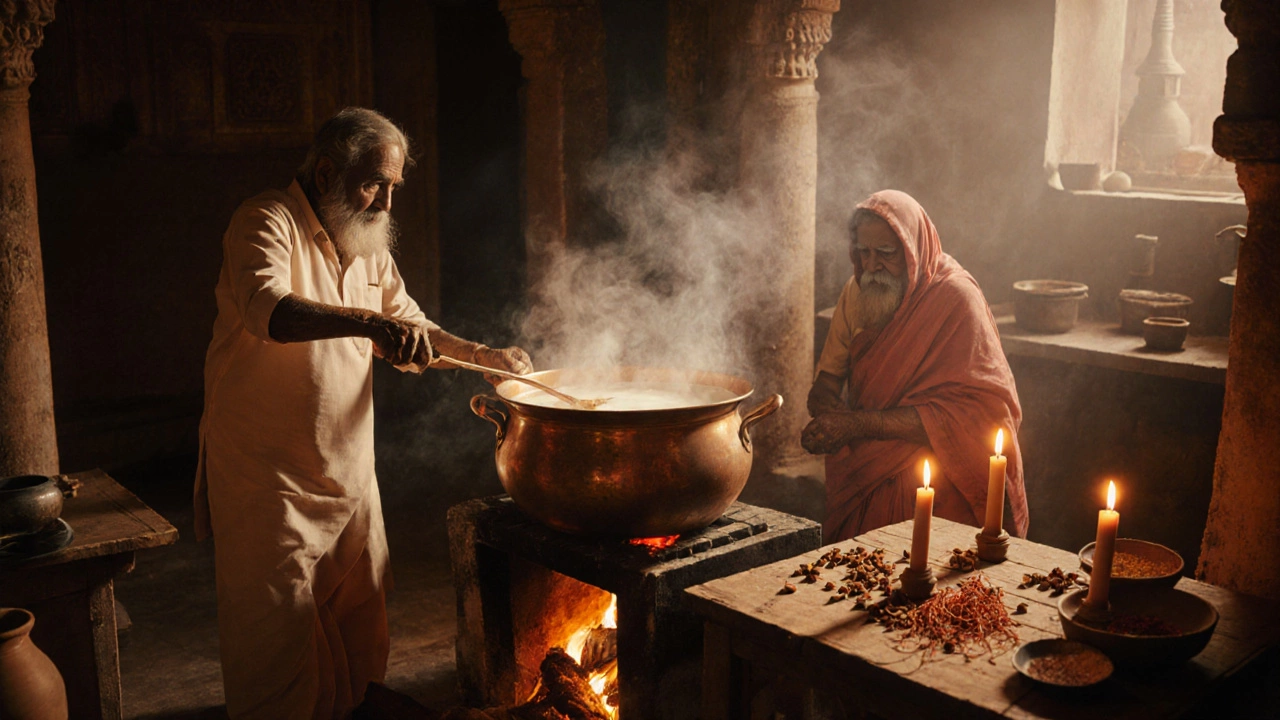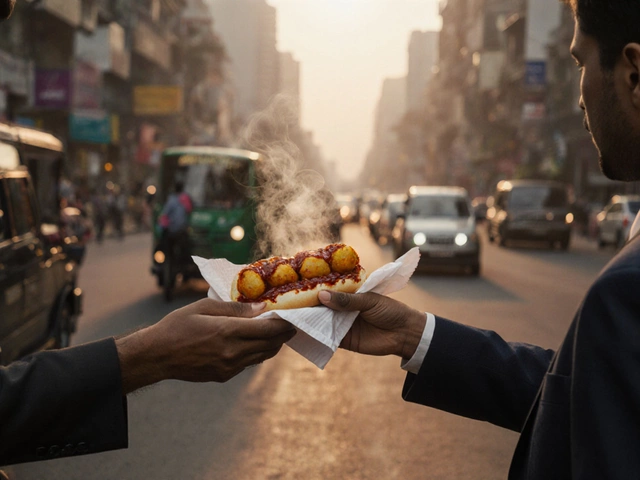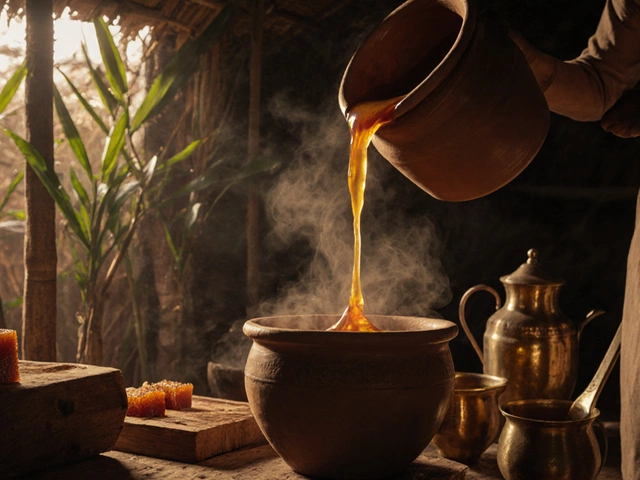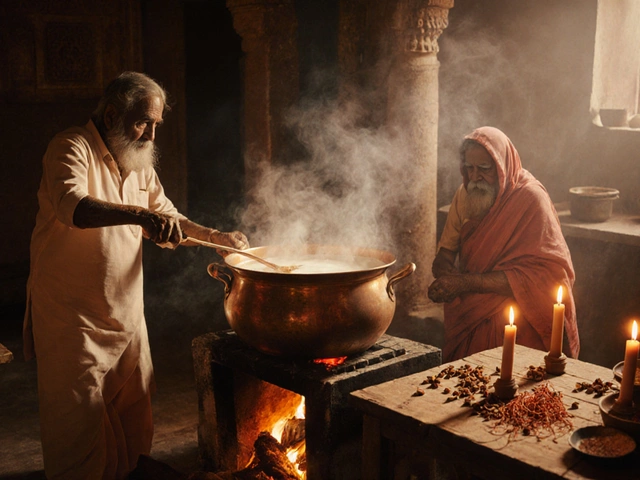Peda Cooking Time Estimator
Peda Cooking Time Calculator
Calculate how long you'll need to cook milk for authentic Peda. The traditional method requires slow reduction to create khoa—the base of this ancient sweet.
This estimate is based on traditional slow-cooking methods described in the article. Actual time may vary based on heat level and pan type.
When you think of Indian sweets, you probably picture jalebis dripping in syrup, gulab jamuns soaking in cardamom sugar water, or barfis stacked in colorful layers. But none of these are the oldest. The true veteran of Indian desserts is Peda-a simple, creamy, milk-based sweet that’s been around for over 500 years. It doesn’t need frying, syrup, or fancy ingredients. Just milk, sugar, and patience. And yet, it’s still one of the most beloved sweets across India today.
The Real Origin of Peda
Peda traces its roots back to the 16th century in Mathura, Uttar Pradesh-the birthplace of Lord Krishna. According to local tradition, the sweet was first made by temple cooks who wanted to offer something pure and sacred to the deity. They simmered milk for hours until it thickened into a paste, then shaped it into small discs and flavored it with cardamom or saffron. No oil. No flour. No eggs. Just milk turned into gold.
By the 1700s, Peda had spread beyond temples into royal kitchens. Mughal records mention it being served at feasts alongside other delicacies. But unlike many sweets that evolved with Persian or Central Asian influences, Peda stayed true to its simple, dairy-based form. That’s why historians consider it one of the few truly indigenous Indian sweets-not borrowed, not adapted, but born right here.
How Peda Is Made (The Traditional Way)
Making authentic Peda isn’t hard, but it takes time. You start with full-fat milk-preferably from native Indian breeds like Gir or Sahiwal. Pour it into a heavy-bottomed pan and let it simmer on low heat. Stir constantly. As the water evaporates, the milk thickens. After 2 to 3 hours, it turns into a sticky, pale-yellow mass called khoa-the base of many Indian sweets.
Then you add sugar. Not too much-just enough to balance the richness. A pinch of cardamom powder. Sometimes a touch of saffron for color. Once the mixture pulls away from the pan, you take it off the heat and let it cool slightly. Then you roll it into small balls and flatten them into discs. That’s it. No molds. No fancy tools. Just your hands and a lot of patience.
Modern versions use pre-made khoa or even condensed milk to cut down time. But the real thing? It’s slow. And that’s why homemade Peda tastes different-it carries the memory of hours spent stirring, of kitchen walls steamed with milk, of generations doing the same thing.
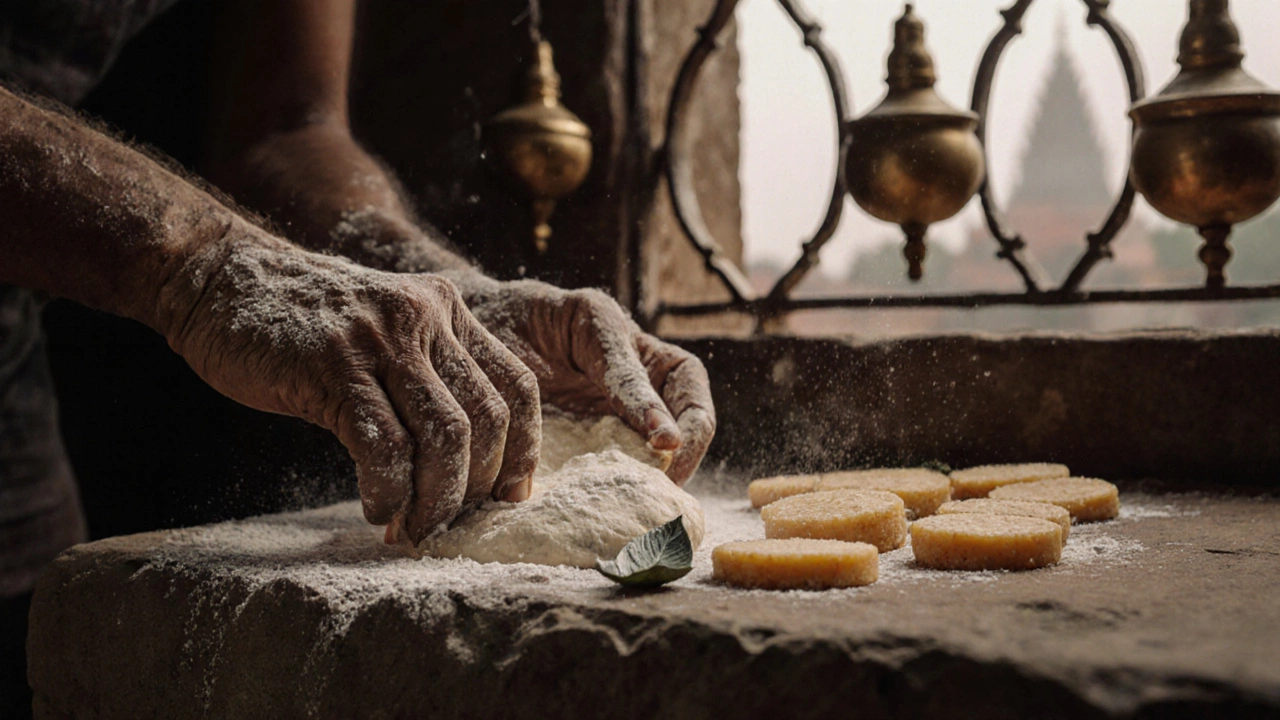
Why Peda Survived When Other Sweets Changed
Many Indian sweets changed with the times. Jalebis got their syrup. Rasgullas got their syrupy bath. But Peda didn’t need to. It was already perfect.
It didn’t require oil for frying, so it stayed affordable for village households. It didn’t need imported ingredients like rosewater or pistachios, so it stayed accessible. It kept well at room temperature for days, making it ideal for festivals and travel. And because it was tied to religious offerings, it was passed down through families-not as a trend, but as a ritual.
Even today, in small towns across Uttar Pradesh, Bihar, and Rajasthan, you’ll find Peda being made in homes on Diwali, Holi, and Krishna Janmashtami. It’s not flashy. It doesn’t have Instagram filters. But it’s the sweet that never left.
Peda vs. Other Ancient Indian Sweets
Some people argue that laddu is older than Peda. Laddus are ancient too-mentioned in Sanskrit texts from the 4th century BCE. But traditional laddus often include flour, nuts, or sesame seeds. They’re more like energy balls than pure milk desserts.
Others point to payasam or kheer, the rice pudding-like sweets from South India. But payasam is a milk-and-rice dish, more like a dessert soup. It’s served warm, often daily. Peda is solid. It’s meant to be held, gifted, offered.
Then there’s halwa. It’s old, yes-but most halwas use semolina, carrots, or ghee. Peda uses only milk and sugar. That purity is what sets it apart.
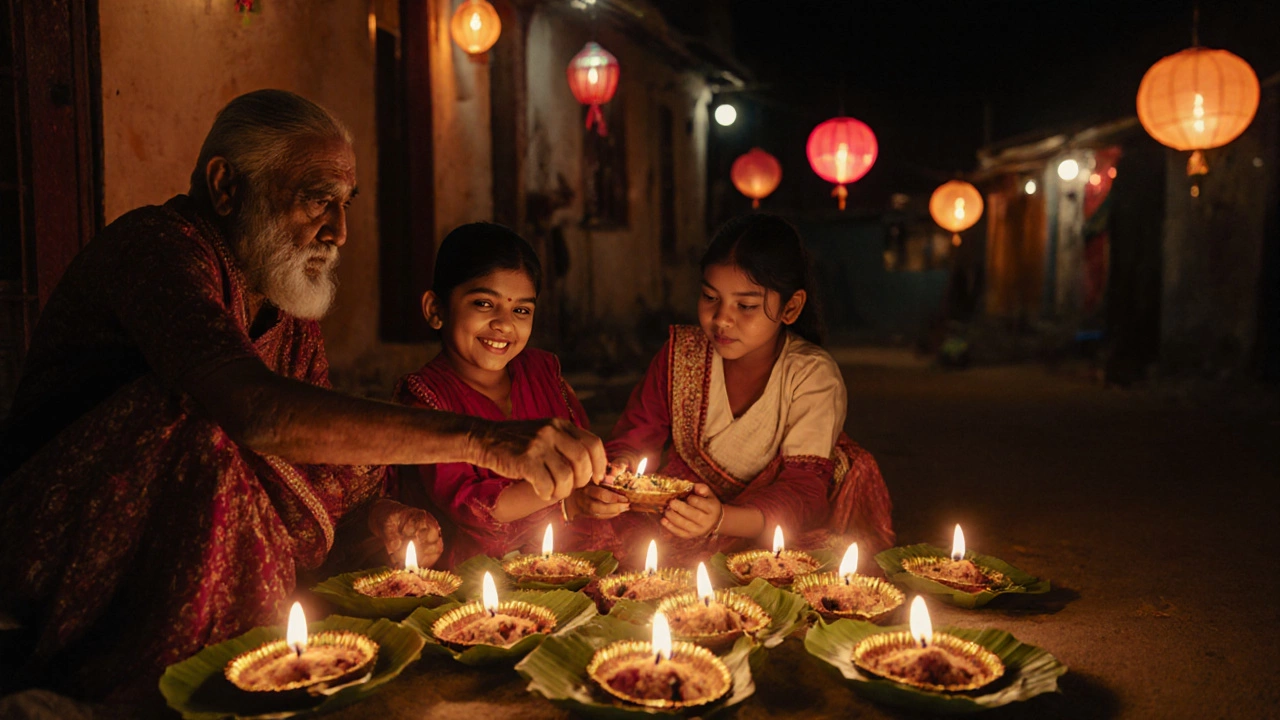
Where to Find the Best Peda Today
If you want to taste the real deal, go to Mathura. The shops near the Krishna Janmabhoomi temple still make Peda the old way. The most famous is Shri Krishna Mishthan Bhandar, which has been operating since 1895. Their Peda is soft, milky, and melts on the tongue-not too sweet, not too dense.
Outside Mathura, you’ll find variations. In Gujarat, they add khoya and rosewater. In Maharashtra, they roll it in edible silver leaf. In Bengal, they make it with date palm jaggery instead of sugar. But they all trace back to that same 16th-century recipe.
Why Peda Still Matters
In a world of bubble tea desserts and fusion gulab jamun cupcakes, Peda stands still. It doesn’t chase trends. It doesn’t need to. It’s not just a sweet-it’s a link to the past.
Every bite carries the scent of wood-fired stoves, the sound of a wooden spoon scraping the pan, the quiet rhythm of a grandmother teaching her granddaughter how to shape the dough just right. It’s the taste of devotion, of patience, of something made with love, not speed.
Peda doesn’t need to be the most popular sweet in India. It just needs to still be made. And it is. In homes. In temples. In small towns. In kitchens where time moves slowly-and sweetness is earned, not bought.
Is Peda the oldest sweet in India?
Yes, Peda is widely considered the oldest continuously made sweet in India, with documented recipes dating back to the 16th century in Mathura. While other sweets like laddu and payasam are also ancient, Peda stands out because it’s made from just milk and sugar, with no flour, oil, or nuts-making it uniquely pure and unchanged over centuries.
What makes Peda different from other Indian sweets?
Unlike jalebis, gulab jamuns, or barfis, Peda doesn’t require frying, syrup, or extra ingredients like flour or nuts. It’s made by slowly reducing milk into khoa, then sweetening and shaping it by hand. This simplicity gives it a clean, milky flavor that’s distinct from richer, oilier sweets. Its texture is soft and melt-in-mouth, not chewy or crunchy.
Can I make Peda at home without a stove?
You can, but it won’t be traditional. Making Peda requires slow, even heat to reduce milk into khoa. Using a microwave or slow cooker might work, but you’ll lose the depth of flavor and texture that comes from constant stirring on a stovetop. The traditional method takes 2-3 hours-but it’s the only way to get that authentic, creamy Peda.
Is Peda healthy?
Peda is not a health food-it’s high in sugar and calories. But compared to fried sweets, it’s simpler. It has no trans fats, no artificial flavors, and no preservatives. Made with full-fat milk, it’s a source of calcium and protein. In moderation, especially during festivals, it’s a natural, minimally processed treat.
What’s the best way to store Peda?
Store Peda in an airtight container at room temperature for up to 5 days. In hot, humid weather, keep it in the fridge-but bring it to room temperature before eating. The texture improves after a few hours as the flavors meld. Don’t freeze it-it ruins the soft, creamy consistency.
